Experience Kiteboarding at Jalama Bay: A Complete Guide
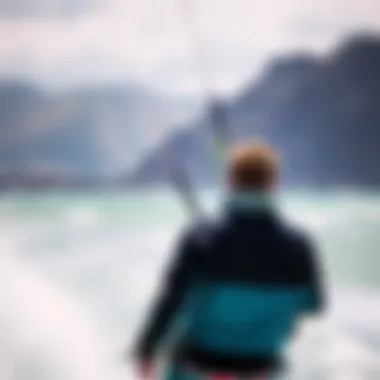
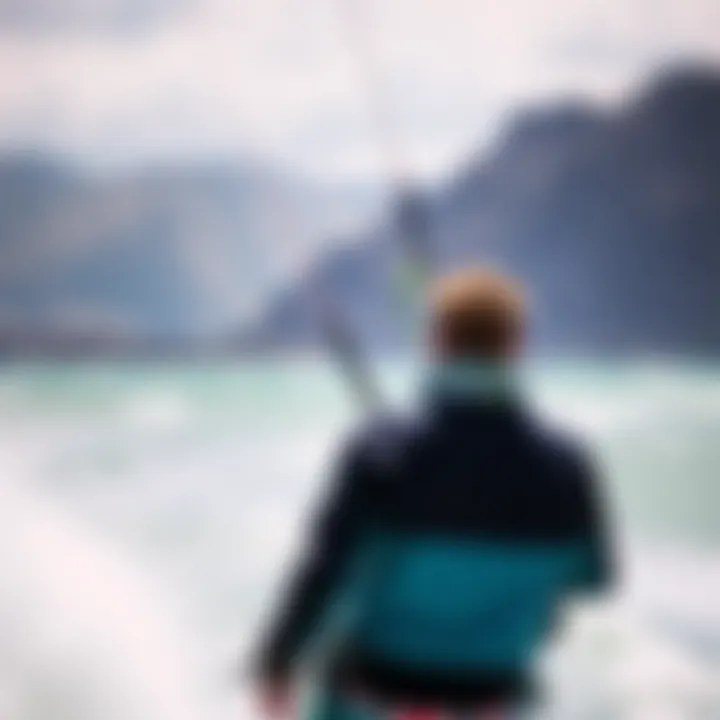
Intro
Jalama Bay is not just a stunning piece of coastline; for kiteboarding enthusiasts, it’s like finding a hidden gem that sparkles even brighter when the sun hits the waves just right. The bay, located in California, boasts pristine beaches, reliable wind conditions, and an inviting atmosphere—all perfect ingredients for both novice and seasoned kiteboarders. Whether you're cruising the surf for the first time or showing off your latest trick, Jalama Bay offers something for everyone.
Imagine frolicking in the surf with the sandy shores of the Pacific Ocean spread wide before you. The natural surroundings here not only create a picturesque backdrop but also provide unique kiteboarding conditions that can cater to varied skill levels. In this guide, we’ll dive into the essential aspects of kiteboarding at Jalama Bay, from what gear you’ll need to tips on mastering the waves, ensuring that your adventure is as smooth as the tides.
The journey doesn’t stop at just the water conditions; we'll also explore local culture, weather patterns, and environmental considerations. This comprehensive understanding will help you make the most of your time at Jalama Bay while enjoying every kiteboarding thrill. So buckle up, and let's glide through the world of Jalama Bay!
Intro to Jalama Bay
Jalama Bay is not just another dot on the map; it represents a vibrant convergence of nature and adventure, making it a notable destination for kiteboarding enthusiasts. This little slice of paradise on the Californian coast is rich in opportunities, providing ideal conditions for both novice and seasoned kiteboarders alike.
For many, the thrill of kiteboarding is about much more than just cutting through waves or catching the wind. It’s a meditative dance with nature, an exhilarating way to connect with the environment while challenging one’s own physical capabilities. At Jalama Bay, kiteboarders find a unique backdrop of unspoiled coastline that enhances this experience, where the crash of waves meets the roar of the wind.
Imagine standing on the beach, the salty air filling your lungs, as you watch the colorful kites swell against the azure sky. This scenery isn’t just picturesque; it plays a crucial role in making each kiteboarding session memorable. Because of its geographical features, wind patterns, and climate, Jalama Bay offers a diverse playground for kiteboarding. Here, one can embrace the thrill while surrounded by breathtaking views and vibrant ecosystems.
Understanding Jalama Bay's unique characteristics is essential for those looking to make the most of their kiteboarding adventures. The bay is often quiet, away from the bustling tourist spots which can distract from the tranquility and serenity one might seek in nature. This seclusion allows kiteboarders space to truly relish the sport, free from interference.
Additionally, being aware of local culture and community nuances enhances the visiting experience. Engaging with local kiteboarders and residents can provide insights that may not be apparent from guidebooks or online forums. The stories shared in casual tête-à-têtes can reveal hidden gems and unique kiteboarding tips. A visit is not only a chance to tackle waves, but also an invitation to delve deep into the folklore and idioms of the area, thus enriching your overall journey.
Jalama Bay serves as a gateway to understanding the broader context of kiteboarding culture, climate influences, and equipment considerations. The more informed kiteboarders are, the more they can optimize their time on the water. With this guide, readers will arm themselves with the knowledge necessary to navigate their adventure effectively, maximize safety, and embrace the full breath of Jalama Bay’s offerings.
"Kiteboarding is not just a passion; it’s a lifestyle that demands respect for nature and an eagerness to learn. Jalama Bay encapsulates that spirit perfectly."
All things considered, the introduction to Jalama Bay is just the tip of the iceberg. There’s much to explore, learn, and necessary to enjoy every breeze and wave effectively. Soon enough, readers will be ready to plunge into the subsequent sections that will elucidate every vital aspect of kiteboarding in this idyllic locale.
Geographical Overview
Understanding the geographical landscape of Jalama Bay is crucial for kiteboarding enthusiasts. This segment of the guide sheds light on the area's geographic specifics, which play a pivotal role in shaping the kiteboarding experience. Knowing the lay of the land can mean the difference between a great day out on the water and an afternoon of frustration.
Location and Access
Jalama Bay is nestled along the central coast of California, offering a dramatic backdrop of rugged cliffs and expansive ocean views. Stretching for miles, the coastline offers unique access points for kiteboarders of all skill levels. Visitors can reach the bay easily via Highway 1, which provides splendid ocean views en route. The bay can be found a bit off the beaten path, away from the hustle and bustle of local towns. This remoteness not only adds to its charm but also helps keep the crowd size manageable.
When you arrive, parking is conveniently located close to the beach, making it easier to haul your gear without breaking your back. However, it's worth noting that access can be limited during rainy seasons when roads may get washed out or hindered by mudslides. Keeping an open eye on weather conditions can be a game changer.
Environmental Characteristics
Jalama Bay is framed by serene natural surroundings, with an ecosystem that’s both diverse and fascinating. You can stumble upon majestic beaches that feature fine sand and clear waters suitable for serene paddleboarding or wild kiteboarding sessions. The coastal cliffs, on the other hand, aren’t just picturesque; they serve as natural wind tunnels—guiding those gusty winds that kiteboarders love.
The unique topography of the land also affects water conditions. For instance, the water often holds a pleasant warmth during the summer, making it great for prolonged sessions on the board. However, it can get a bit chilly during the winter months, urging enthusiasts to dress in wetsuits for comfort.
In terms of wildlife, the bay is a haven for various birds and marine life. Occasionally, you might even spot a sea otter bobbing about or schools of fish flicking through the water. Being aware of your environmental surroundings adds more than just awe; it connects kiteboarders with the local ecosystem, creating a richer experience on the water.
Understanding these geographic elements helps kiteboarders navigate not just the waters, but also the delightful subtleties of nature that make Jalama Bay a unique spot for their adventurous pastime.
"Kiteboarding at Jalama Bay is as much about the landscape as it is about the wind and water. Embrace both to make the most of your day!"
Ultimately, this geographical insight serves to enhance the kiteboarding experience, making it not just an activity, but a deeper connection with the place itself. Whether it's the winds, water, or wildlife, knowing what Jalama Bay has to offer will enrich your sessions on the kite.
For more information about California's coastal geography, you may explore this resource: California Coastal Commission.
Let’s now dive into the climate conditions that further define the kiteboarding journey in Jalama Bay!
Climate Conditions
Understanding the climate conditions at Jalama Bay is crucial for kiteboarding enthusiasts. Kiteboarding depends heavily on wind and water conditions, and knowing when to visit can make all the difference in your experience. Temperature, wind strength, and seasonal changes all play integral roles in planning a successful kiteboarding trip.
Wind Patterns
Jalama Bay is known for its steady and favorable wind patterns, which are considered a kiteboarder’s dream. The winds here mainly blow from the northwest, usually picking up in the afternoon. This consistent afternoon wind is typically a result of thermal effects, where the land heats up faster than the water, creating a pressure difference that drives the wind.
Wind strengths can vary:
- Beginner kiteboarders might prefer days with gentle winds around 10-15 knots, while seasoned riders often thrive when the wind speeds reach 20 knots or more.
- Understanding wind forecasts is essential; you can check daily updates on reliable weather websites or local forecasts like those found on Windy.com.
Experiencing wind that shifts direction can be a challenge, especially in a location like Jalama Bay, so being aware of local wind patterns is key. Many kiteboarders suggest starting to ride around mid-afternoon when winds are typically at their strongest.
Seasonal Variations
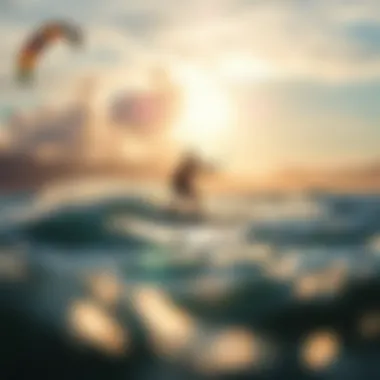
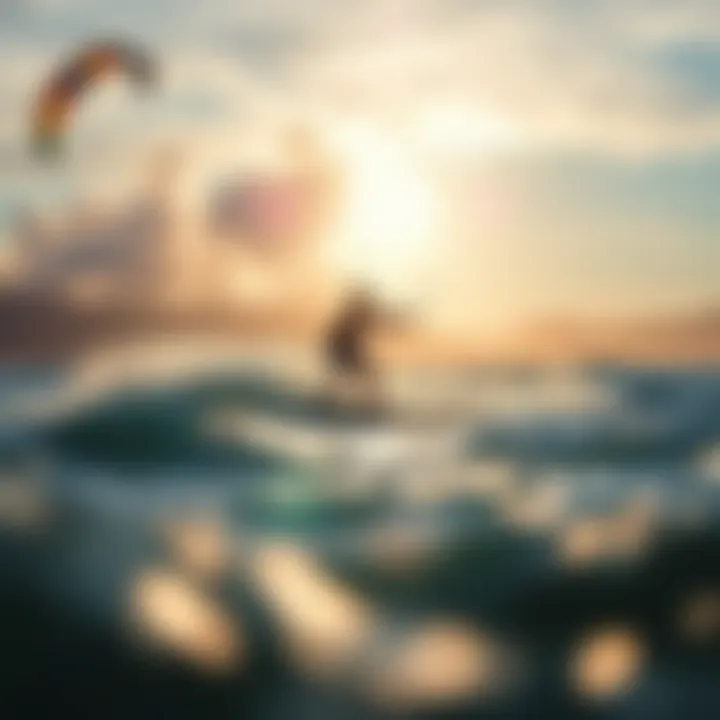
Seasons at Jalama Bay dictate the type of experience you should expect as a kiteboarder. From late spring to early fall, the weather remains generally warm, offering excellent opportunities for kiteboarding. Here’s a breakdown of how each season impacts the kiteboarding scene:
- Spring (March to May): The winds begin to strengthen during these months. You might find good conditions but expect fluctuations.
- Summer (June to August): This is the peak season. The wind is at its strongest, and the weather is warm. Expect many fellow kiteboarders during this time
- Fall (September to November): Winds remain strong, but the ocean may be choppier as storms can shift in during later months of the season.
- Winter (December to February): This is the offseason for kiteboarding. While conditions can still be reasonable, it's less predictable with occasional colder fronts and weaker winds.
Tip: Always check the seasonal forecast before your visit. A reliable resource for this is the National Oceanic and Atmospheric Administration (NOAA) at noaa.gov which provides climate data and forecasts for locations across the U.S.
In summary, knowledge of the climate, especially wind patterns and seasonal variations, is foundational for enjoying kiteboarding at Jalama Bay. Equip yourself with this understanding, and you’ll be well on your way to maximizing your time on the water.
Local Culture and Community
In understanding Jalama Bay, it's crucial to delve into the character that shapes this region. The local culture and community not only enhance the kiteboarding experience but also allow enthusiasts to connect with the environment and its people on a deeper level. Here lies a place where nature's allure meets traditional customs, providing a backdrop that is rich in heritage and vibrancy.
Historical Context
Jalama Bay has long been a sanctuary, not just for kiteboarders but for those seeking solace in nature. Historically, this area has been inhabited by indigenous communities who developed a profound respect for the land and sea. Local legends often speak about the spirits of the ancestors who protect the waters, emphasizing the sacred relationship the community holds with their environment.
The coastline has been shaped by various influences over the years, each leaving their imprint. As settlers arrived, the cultural tapestry grew richer, weaving together traditions from multiple backgrounds. This melding of ideas is evident in local festivals, art, and cuisine. When kiteboarding enthusiasts visit, they can still see echoes of this heritage, from the structures lining the shore to the recipes in nearby eateries. Grabbing a bite of freshly caught fish, seasoned with local herbs, offers a taste of the region that connects the visitor with the history.
Community Engagement
Engaging with the local community can greatly enhance the kiteboarding journey at Jalama Bay. Visitors are encouraged to participate in various community activities throughout the year. One key event is the annual kite festival that invites kiteboarders of all skill levels. This gathering fosters camaraderie and showcases impressive maneuvers while bringing together families and travelers.
Active participation in these gatherings not only promotes skill exchange but also emphasizes environmental stewardship. Departed lunch remnants aren't just discarded; they are often composted or recycled, reflecting a shared commitment to preservation. Meaningful discussions frequently arise between kiteboarders and locals about the importance of keeping the bay clean and protecting marine life.
Here are some ways you can engage with the local community:
- Attend local festivals to learn about traditional practices.
- Volunteer for clean-up initiatives at the beach to protect the environment.
- Visit local artisans and support their crafts.
Engaging with the local culture enhances your kiteboarding experience, bringing new friendships and a deeper understanding of the area.
Overall, the local culture and community at Jalama Bay are not merely a backdrop to kiteboarding; they are a vibrant part of the experience that shapes and enriches it. Embracing these elements can transform a standard trip into a memorable one, fostering a lifelong connection with this incredible destination.
Kiteboarding Conditions at Jalama Bay
Kiteboarding at Jalama Bay stands out as a premier experience, attracting enthusiasts from all walks of life. The conditions found here are a vital aspect of what makes this location so unique and appealing. Kiteboarders, whether they're beginners or seasoned riders, will find elements that cater to their needs, enhancing their vacation while also posing a few considerations to keep in mind.
When engaging in this thrilling sport, understanding the kiteboarding conditions is crucial. Kiteboarders rely on the synergy between wind patterns, water characteristics, and environmental factors. Let's delve into the specifics.
Ideal Weather for Kiteboarding
The weather serves as the backbone of kiteboarding. Jalama Bay enjoys a favorable climate, with winds that align beautifully for optimal kiteboarding. The summer months, specifically from May to September, provide the most reliable conditions. During these months, trade winds typically blow consistently, averaging around 15-25 knots. This range is generally considered ideal for kiteboarding, permitting riders to harness their skills without overwhelming challenges.
Additionally, the air temperature dances between 60-75°F, creating a comfortable environment for those long hours on the water. The coastal air can turn brisk in the evening, so bringing a light jacket is always a smart move.
As you prepare for a day of kiteboarding, it can be beneficial to check weather forecasts from reliable sources like Windy and NOAA, which offer comprehensive insights into current wind conditions and weather changes.
"Winds affect not just the fun of kiteboarding; they are the lifeblood of the sport. Understanding them transforms a good ride into a great one."
Water Conditions and Bottom Structure
The next component to consider is the water condition and the bottom structure of Jalama Bay. The bay features a blend of flat water and small waves, making it accessible for beginners while still providing enough excitement for the experienced. This variety ensures that everyone finds what they're looking for.
Moreover, the bottom structure varies across the bay, with areas exhibiting sandy bottoms that are gentle on falls. However, there are rocky portions too, which can pose challenges. Being mindful of these characteristics can aid riders greatly in making wise decisions about their kiteboarding experience. Employing techniques such as scouting the water before heading out can lead to improved safety and enjoyment.
- Advantages of the Water Conditions:
- Flat water areas provide ease for beginners to learn and refine skills.
- Small waves offer playful dynamics for intermediate and advanced riders.
- Sandy bottoms reduce risk of injury during falls.
Essential Gear for Kiteboarding
Kiteboarding is not just about the thrill of soaring across the water; it requires a level of preparation and suitable gear to ensure safety and enjoyment. The right equipment can mean the difference between a successful day on the waves or a disaster waiting to happen. Understanding what essential gear is needed can enhance the experience, reduce risks, and elevate performance.
Recommended Equipment
When it comes to kiteboarding, having the right gear is crucial. Here's a breakdown of essential equipment:
- Kite: The heart of the sport. Kites are generally categorized by size and style. Larger kites catch more wind but can be tougher to handle, while smaller kites are easier to maneuver but provide less lift. Choosing the right kite depends on the wind conditions and the rider's skill level.
- Board: Kiteboards come in various shapes and sizes. A twin-tip board is common, allowing for riding in both directions, which is ideal for beginners. Advanced kiteboarders may choose directional boards, which prioritize speed and control.
- Harness: This is what connects you to the kite. There are two main types: waist harnesses and seat harnesses. Waist harnesses offer mobility and are favored by many intermediate to advanced riders, while seat harnesses provide additional support, which can be beneficial for beginners who may struggle with balance.
- Control Bar: This piece of equipment is essential for steering the kite. The control bar helps regulate the power and angle of the kite with ease. It's worthwhile to invest in a bar that fits well to your kite and offers comfort during extended use.
- Safety Leash: A safety leash is a small but vital addition. It keeps your kite tethered to you in case of a fall, preventing it from wandering and creating hazardous situations.
- Personal Flotation Device (PFD): Safety first! Wearing a PFD is a must for any kiteboarder. Not only does it help with buoyancy, but it also provides an extra layer of protection in case of accidents.
- Helmet: Protecting your noggin should be a priority. A helmet can prevent serious injuries from crashes or falls, especially in rugged water conditions.
Choosing equipment isn't just about what looks good or is trending. Every piece must be matched with the rider's skill level, the conditions of Jalama Bay, and personal comfort. Engaging local shops for advice can offer unique insights into local gear trends.
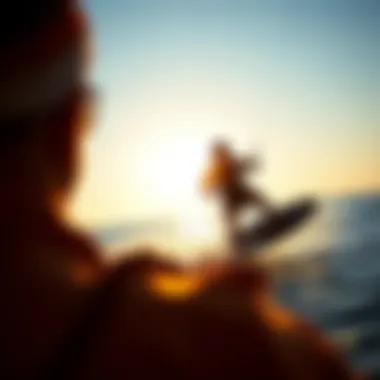
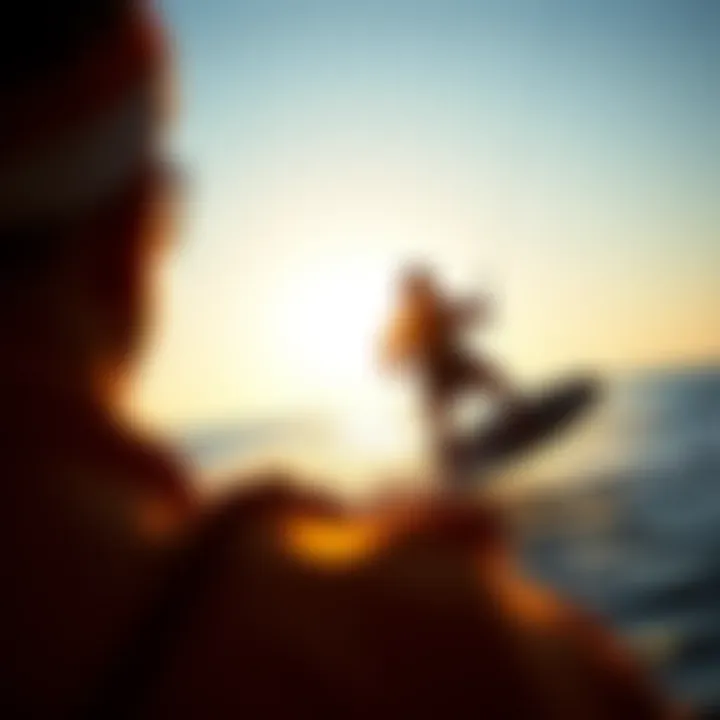
Maintenance Tips
Once you have the right gear, keeping it in optimal condition is important to ensure its longevity and performance. Here are some simple maintenance tips:
- Cleaning: Rinse your gear with fresh water after every session. Sand and salt can wear down equipment quickly, so it's good practice to remove them regularly.
- Storage: Store your kite in a cool, dry place away from direct sunlight. Excessive heat can damage the fabric and reduce your kite's potency.
- Regular Inspections: Check your lines and connections before each use. A frayed line can lead to catastrophic failures, so replacing them when they wear out is essential.
- Repairs: Invest in repair kits specifically designed for your gear. Small cuts and leaks can often be fixed without professional assistance, prolonging the life of your equipment.
"Taking care of your kiteboarding gear is like taking care of your best friend. It needs attention and love to keep bringing you joy!"
Properly maintaining your equipment will not only enhance your kiteboarding experience but also keep you safe while exploring the stunning waters of Jalama Bay. Understand your gear and its needs, and you'll be ready to tackle the waves with confidence.
Safety Considerations
Kiteboarding can be an exhilarating experience, but it comes with its own host of risks. Understanding safety considerations is paramount, especially in a dynamic environment like Jalama Bay. Here, the confluence of natural elements such as wind, water, and wildlife can create some unpredictable situations. Equipped with the right knowledge, kiteboarders can enjoy their sport while minimizing hazards.
General Safety Guidelines
When heading out for a kiteboarding session at Jalama Bay, there are some fundamental safety guidelines that can help ensure a safe and enjoyable experience.
- Check the Weather: Always begin with a thorough check of the forecast. The wind conditions can shift rapidly, affecting your ability to kite safely.
- Know Your Limits: Kiteboarding can be demanding. Understand your own skill level and don’t push yourself too far, especially in challenging conditions.
- Use Proper Equipment: Ensure that your kite and gear are in good shape. Worn or damaged equipment can fails when you need it the most.
- Buddy System: Kiteboarding is more fun with friends, and it’s safer as well. Having someone else around can be invaluable in emergencies.
- Emergency Plan: Always have a clear plan for emergencies. Know the location of the nearest help and have a communication device on you, like a waterproof phone case or a radio.
It’s often said that the sea is a place of both beauty and danger. The right precautions can help keep adventurers out of trouble while they’re taking in the stunning views of Jalama Bay.
Environmental Awareness
Being mindful of the environment is crucial for every kiteboarder, especially in sensitive areas like Jalama Bay. Protecting nature preserves the beauty and availability of kiteboarding spots for future generations.
- Respect Local Wildlife: Jalama Bay is home to various wildlife species, including seals and sea birds. Maintain a safe distance to avoid disturbing their natural behavior.
- Follow Local Regulations: Each region has its own set of rules regarding kiteboarding. Familiarize yourself with these regulations to ensure compliance.
- Leave No Trace: Adopt a no-trace philosophy by cleaning up after yourself. Dispose of trash properly and ensure your presence does not negatively impact the area.
- Stay Informed: Keep updated with local conservation efforts and participate when possible. This not only helps the ecosystem but strengthens community bonds as well.
"Our planet is only borrowed; it’s our duty to take care of its treasures."
Being responsible while enjoying kiteboarding isn’t just a matter of personal safety—it's about giving back to the environment around us. Practicing good environmental awareness can foster a culture of respect among enthusiasts and non-enthusiasts alike.
Challenges of Kiteboarding at Jalama Bay
Kiteboarding is an exhilarating sport, but like all sports, it comes with its own set of challenges, especially in a unique locale such as Jalama Bay. Understanding these challenges is crucial not just for enjoyment, but also for safety and environmental awareness. The breathtaking surroundings often deceive kiteboarders into thinking that conditions are always favorable. However, recognizing the hurdles is an essential step in ensuring a rewarding kiteboarding experience.
Navigational Obstacles
Navigating the waters of Jalama Bay can be tricky, particularly for those who are unfamiliar with the area. The consistent winds and rolling waves present a false sense of security, but below the surface lies a different story. Navigational obstacles, such as submerged rocks and sandbars, can pose significant risks. These hidden dangers are etched into the bay’s bottom structure and can lead to serious accidents if kiteboarders aren't vigilant.
Local knowledge is invaluable. Many seasoned kiteboarders agree that having a guide or at least consulting with local experts before hitting the water can make all the difference. Additionally, utilizing detailed nautical charts can help identify potential hazards. Here are some simple tips for navigating effectively:
- Study the area before you go. Familiarize yourself with maps and guides about the local water's topography.
- Stay within sight of your launch point. This helps maintain a mental map of where you are at all times.
- Check tide schedules. Changes in tide can affect water depth and the visibility of underwater obstacles.
"A little knowledge can go a long way. Familiarity with the sea will guide you through its challenges."
Wildlife Considerations
Additionally, the vibrant ecosystem around Jalama Bay adds another layer of complexity to kiteboarding. The area is known for its rich marine life, including various species of fish and marine mammals. While sightings can be breathtaking, they come with their own set of considerations. For instance, kiteboarders must be cautious of marine life, particularly if they are venturing into areas where animals are known to inhabit.
Aggressive encounters, though rare, can happen. Sea otters and seals, for example, can be curious and may approach kiteboarders. Here are a few points to keep in mind:
- Maintain a respectful distance. If you spot wildlife, give them space and avoid any sudden movements.
- Educate yourself about the local species. Knowing which animals are in the waters can help you anticipate any encounters.
- Be aware of no-kite zones. Some areas may have specific regulations to protect wildlife and their habitats.
Local Amenities and Accommodations
Jalama Bay is more than just a prime location for kiteboarding; it’s also a place where visitors can find comfort and convenience during their stay. Understanding the local amenities and accommodations available can elevate a kiteboarder's trip, making it not only enjoyable but also seamless. From camping spots to lodging options, having access to the right facilities is crucial for a fulfilling experience. Kiteboarders often spend long hours on the water, so knowing where they can rest, eat, and recharge is essential.
Camping and Lodging Options
At Jalama Bay, options for camping and lodging fit a variety of preferences and budgets. The beach itself provides several designated camping areas, which allow visitors to immerse themselves in nature overnight, often falling asleep to the gentle sound of waves. These campsites usually come with basic amenities, such as restrooms and picnic tables, fostering a sense of community among kiteboarding enthusiasts.
Those looking for a more stable roof over their heads might want to explore local motels or vacation rentals in nearby towns like Lompoc. Many of these establishments are just a short drive away from the beach, making them accessible while providing a comfortable retreat after a day spent in the sun and wind.
- Campsites: Great for those who enjoy the outdoors. Often equipped with picnic tables and are within close proximity to kiteboarding spots.
- Motels and Hotels: Ideal for those seeking more comfort. Many offer amenities like air conditioning, free Wi-Fi, and even restaurants.
Nearby Facilities and Services
When gearing up for a kiteboarding session at Jalama Bay, knowing where to find essential services can save a lot of hassle. Nearby facilities include grocery stores, surf shops, and equipment rentals. Each of these plays a significant role in ensuring a smooth kiting experience. The local shops not only sell gear but can also provide repairs and expert advice from seasoned kiteboarders. Additionally, having access to a first aid station in case of minor accidents is vital.
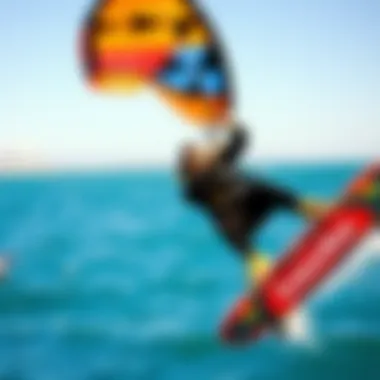
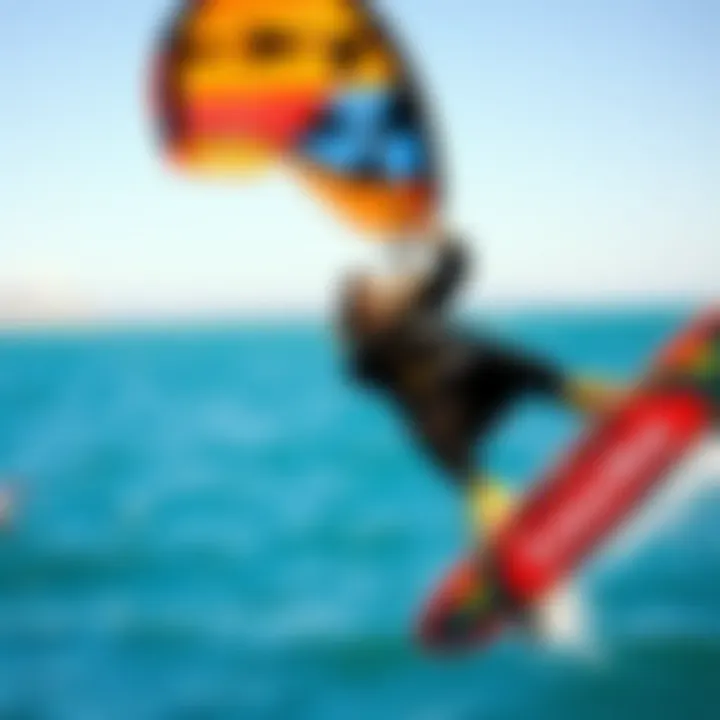
"There's nothing worse than being miles from the nearest store when you need sunscreen or snacks!"
Considering the remote nature of Jalama Bay, it would be wise to stock up on supplies. However, if you happen to forget any essentials, nearby towns have grocery stores and convenience shops that can help you get back on track quickly. This blend of amenities and services means kiteboarders can focus on what truly matters—enjoying their time on the water.
Environmental Impact and Conservation
The alluring landscape of Jalama Bay is not just an ideal backdrop for kiteboarding; it's a delicate ecosystem that necessitates careful consideration by those who wish to enjoy its pristine shores. As kiteboarders, we wield a unique responsibility toward the environment, engaging both with nature's beauty and its fragility. This section delves into the importance of understanding environmental impact and conservation, emphasizing how our actions can either Preserve or harm the natural wonders we cherish.
Recognizing that the act of kiteboarding can have ramifications for local wildlife and habitats is crucial. The thrill of tearing across the waves is tempered by the need to ensure that our passions do not intrude upon the natural spaces. The more we understand our impact, the better we can implement practices that protect Jalama Bay while still enjoying its offerings.
"When you respect nature, it respects you back."
Sustainable Practices for Kiteboarders
Adopting sustainable practices isn't just a trend; it’s a way to ensure that the beauty of Jalama Bay remains for generations to come. Here are steps kiteboarders can take to align their practices with environmental stewardship:
- Choose eco-friendly gear: Opt for equipment from brands that prioritize sustainable materials and manufacturing practices. Look for biodegradable materials or those produced using energy-efficient methods.
- Leave No Trace: After a day on the water, take extra care to remove all trash and equipment remnants. Even a small piece of plastic can have a lasting impact on marine life.
- Respect wildlife: Maintain a safe distance from local fauna, especially nesting birds along the shorelines. It can be easy to forget that we share this space with other creatures.
- Use designated launch areas: Stick to marked launch and landing spots to minimize the disruption of natural habitats and vegetation. This way, both the environment and your equipment can remain unharmed.
Local Conservation Efforts
Thankfully, efforts are under way to address the environmental challenges affecting Jalama Bay. Local organizations champion conservation initiatives aimed at preserving the area’s natural resources:
- Coastal Restoration Projects: These programs focus on rebuilding natural habitats that have suffered from erosion or pollution, improving conditions for both wildlife and visitors alike. Participating in these efforts, even as a volunteer, can foster a deeper connection to the land.
- Educational Programs: Numerous workshops and campaigns raise awareness about the importance of protecting Jalama Bay's ecosystem. Engaging with these programs can enhance your understanding and promote positive behavior change within the kiteboarding community.
- Community-led Cleanups: Joining local clean-up efforts not only benefits the environment but also strengthens ties with fellow enthusiasts and community members. It adds to the collective efforts of ensuring a vibrant, healthy beach.
By participating in these conservation initiatives, kiteboarders can play a pivotal role in safeguarding Jalama Bay. It's all about finding the balance between enjoyment and responsibility, ensuring that this kiteboarding paradise remains untainted for future generations to experience and appreciate.
Engaging with the Local Community
Engaging with the local community at Jalama Bay is vital for a truly enriching kiteboarding experience. It’s not just about the wind and waves; it’s about connecting with the people who call this stunning place home. Embracing the local culture leads to a deeper understanding of the area and even enhances your kiteboarding adventures. You’ll discover that the community is a treasure trove of knowledge, offering insights that you won't find in any guidebook.
Events and Competitions
Participating in local events and competitions can significantly amplify your enjoyment at Jalama Bay. These gatherings are often more than just competitions; they serve as a vibrant showcase of skill, sportsmanship, and camaraderie. Local kiteboarding festivals bring together enthusiasts from various skill levels, fostering a sense of belonging and community spirit.
Many events also include workshops or clinics led by experienced kiteboarders. These sessions can provide invaluable skills that could elevate your performance. For instance, if you're a novice, you might appreciate a clinic focused on basic tricks or safety principles. On the other hand, seasoned kiteboarders can enjoy advanced sessions aimed at honing their skills further.
- Local Competitions: These often have categories for all skill levels, making them accessible and fun.
- Festivals: Besides competitions, festivals feature food stalls, music, and other activities, offering a true taste of local culture.
By participating in these events, you not only get to test your skills but also bond with fellow kiteboarders. As they say, it’s not the destination, it’s the journey — and these events create unforgettable memories.
Volunteer Opportunities
Another rewarding way to engage with the local community is through volunteer opportunities. Many local organizations are always on the lookout for helping hands, whether it’s for beach clean-ups, wildlife conservation, or community festivals. Lending your time and effort can give you unique experiences that enrich your kiteboarding outings. It also positions you as part of the local environmental stewardship.
Through volunteering, you can:
- Build Relationships: Connecting with locals can open doors to friendships and mentorship in your kiteboarding journey.
- Learn about Conservation: Understanding efforts to keep Jalama Bay pristine can enhance your appreciation of the natural beauty surrounding you.
- Contribute to Management: Your efforts in local conservation can help ensure that the area remains a top-tier kiteboarding destination for years to come.
As a kiteboarder visiting Jalama Bay, remember that every effort counts. The tide of the local community flows in harmony with the rhythm of the waves. Engaging with the community isn’t merely an option; it’s a grand opportunity to enrich your experience while fostering sustainable practices that protect the place you love to kiteboard.
“Engagement is not just about being present. It’s about being part of a fabric that weaves experiences and memories.”
By participating in events and volunteering, you create lasting connections and contribute positively to the area, making your kiteboarding journey much more meaningful.
Finale
In summarizing the essence of Jalama Bay, it’s clear that this location stands out not only for its breathtaking scenery but also for the incredible kiteboarding experiences it offers. This comprehensive guide has shed light on various facets that contribute to the allure of this destination, from geographical insights and climatic influences to safety protocols and community interactions.
Understanding the significance of the local culture and environment plays a crucial role in enhancing one's kiteboarding adventure. It’s important for enthusiasts to consider how their activities affect the natural landscape and local wildlife. As kiteboarders engage with the wind and waves, being aware of the ecological footprint can lead to more sustainable practices that preserve the beauty of Jalama Bay for future generations.
Key Benefits of Visiting Jalama Bay
- Optimal conditions: The consistent winds make this spot ideal for both novice and experienced kiteboarders.
- Stunning landscapes: The picturesque surroundings serve not just as a backdrop but as a source of inspiration.
- Community spirit: Engaging with locals and fellow enthusiasts enriches the overall experience, fostering friendships and shared passions.
Final Considerations
Visiting Jalama Bay is not just about the thrill of riding the waves. It’s about immersing oneself in a unique environment, respecting the local customs, and taking an active role in conservation efforts. A well-informed kiteboarding experience at Jalama Bay allows enthusiasts to not only enjoy their sport but also contribute positively to the area they cherish. This guide aims to equip readers with the necessary knowledge to navigate their adventures with both excitement and civic responsibility.
"The true joy of kiteboarding comes not just from the ride, but from appreciating the world in which we glide."
For additional resources, enthusiasts might find the following websites useful:
This multi-dimensional approach helps in fostering a deeper appreciation of the sport, the environment, and the community. Thus, as you prepare to embark on your own journey to Jalama Bay, keep in mind the unique tapestry of elements that together create the magic that is kiteboarding in this remarkable locale.















